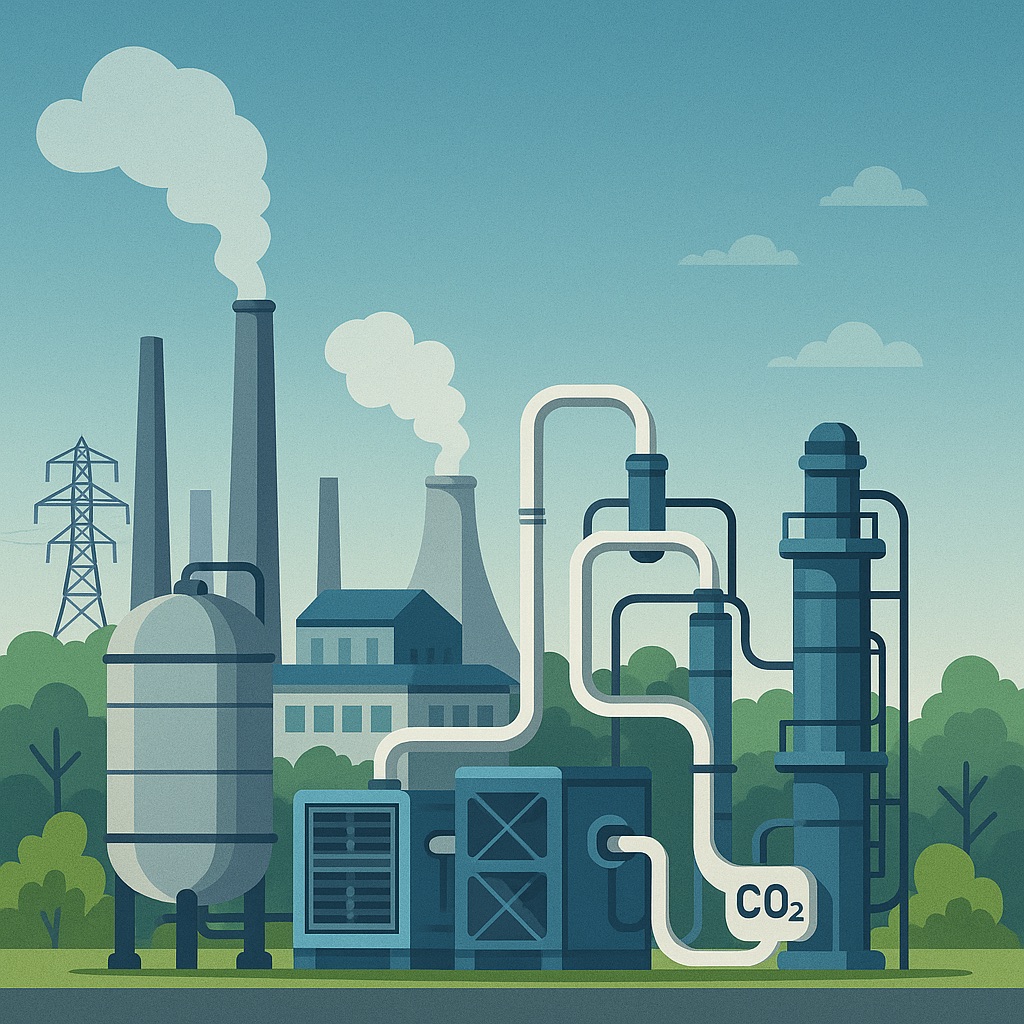As Europe moves deeper into the decisive decade for climate action, Carbon Capture, Utilisation and Storage (CCUS) is becoming a critical lever in the effort to decarbonise heavy industry. While existing capture methods—amine-based absorption in particular—are widely used in early projects, the next phase of deployment will depend on a wave of emerging technologies designed to lower costs, increase efficiency, and broaden applicability across sectors.
Beyond Amines: A Diversifying Toolkit
Traditional solvent-based systems remain the benchmark for capturing CO₂ from flue gases, but their high energy demand poses a challenge for scaling across industries with narrow profit margins. New approaches are entering the field:
- Solid sorbents and metal-organic frameworks (MOFs) promise higher selectivity and lower regeneration energy, potentially reducing operating costs.
- Membrane technologies are advancing rapidly, offering compact, modular systems well-suited for smaller industrial emitters.
- Cryogenic capture is gaining traction, particularly in hydrogen and natural gas processing, where cooling and separation can be integrated into existing processes.
- Bio-based pathways, including microalgae and enzymatic capture, are also being explored, though commercialization is still at an early stage.
Together, these innovations are reshaping the capture landscape, moving CCUS closer to sectors that have traditionally been considered too difficult or expensive to abate.
Hard-to-Abate Sectors in Focus
Industries such as cement, steel, and chemicals face structural emissions that cannot be eliminated through electrification or renewable inputs alone. Here, capture technologies are evolving to meet sector-specific needs. Pilot projects in Europe are demonstrating in-situ mineralisation for cement, capturing CO₂ directly into building materials, while in steelmaking, tailored solvents are being tested to withstand high-temperature exhaust streams.
The diversity of industrial emissions is pushing developers to adapt capture solutions rather than rely on one-size-fits-all approaches.
The Economics of Innovation
Cost remains the decisive factor in determining which technologies will progress from laboratory to large-scale deployment. The International Energy Agency estimates that capture costs must fall below €100 per tonne to achieve widespread adoption. Emerging solutions are targeting this threshold through reduced energy requirements, modular deployment, and integration with existing industrial processes. Crucially, the EU’s regulatory environment—through instruments such as the Emissions Trading System (ETS) and the Carbon Border Adjustment Mechanism (CBAM)—is creating the financial pressure needed to make innovation commercially viable.
Looking Ahead
 The next few years will be decisive for emerging capture technologies. As pilot projects expand into clusters and hubs, lessons learned will determine which pathways are scalable and bankable. The diversity of approaches suggests that no single technology will dominate; instead, a portfolio of capture solutions will likely evolve to fit different industrial contexts.
The next few years will be decisive for emerging capture technologies. As pilot projects expand into clusters and hubs, lessons learned will determine which pathways are scalable and bankable. The diversity of approaches suggests that no single technology will dominate; instead, a portfolio of capture solutions will likely evolve to fit different industrial contexts.
Industry stakeholders, policymakers, and investors will have an opportunity to assess these developments in detail at the Industry CCUS Conference 2025 in Amsterdam (26–27 November), where case studies on next-generation capture technologies will feature prominently. For businesses navigating the twin pressures of decarbonisation and competitiveness, understanding which innovations are moving fastest from pilot to portfolio will be essential.
Editor’s note: The above material was provided by the organisers of the Industry CCUS Conference 2025 (26–27 November, Amsterdam). NewsEnergy is publishing it as a media partner of the event.
READ ALSO:

